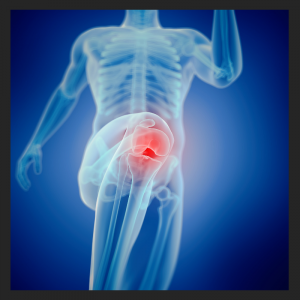The Lateral collateral ligament of Knee is also known as fibular collateral ligament as it runs from the lower end of thigh bone (femur) and gets attached to the lower leg bone (fibula). It is a thick band of tissue that holds the lateral stability or the outside of the knee joint.
Lateral collateral ligaments are known to get injured less compared to the medial collateral ligament; not because it is stronger or not within the bounds of possibility, it is because the probability to get injured is considered less as per knee structure and function.
How the lateral collateral ligament gets injured.
The main function of the ligament is to withstand the varus force and to provide lateral stability of the knee. Activities that may cause you to injure the LCL are:
- Direct or indirect blow to the outside of the knee joint
- Sport injuries 🏋️
- Valgus force
- Poor alignment of knee joint
- Over stretching of the ligament
How will you know if you have injured your LCL?
Similar to an MCL injury, an LCL injury is graded depending on the severity of the injury. Your Physiotherapist will examine the injured site and assess the severity of the injury.
Your Physiotherapist will further proceed with a stress test or varus test where he/she would apply stress on the lateral side of your knee, that will confirm the degree of your LCL injury.

1st Degree LCL injury
- It may present with the mild reddish coloration of the skin with mild swelling. The pain will be minimal as the ligament fibers are intact.
- Pain and swelling will subside with rest
- You will be able to walk
2nd Degree LCL injury
- There will be moderate pain and swell as the ligament fibers are partially torn.
- Bluish coloration of the skin (Like a bruise)
- Pain in the whole knee joint and difficulty bearing weight.
- Limping
3rd Degree LCL injury
- The ligament fibers are completely torn
- Severe 🔥 pain or no pain
- Severe swelling
- Instability of joint
- You won’t be able to move your limb.
How your Physiotherapist can help you
If you think you have hurt your LCL, without delaying further, consult a Physiotherapist to get treated on time and to prevent further complications follow the below instructions:
1st degree
- (Remember ‘RICE’ – See points 2-5 )
- Rest
- Ice
- Compression
- Elevating the limb
- Treatment for pain management and effected surrounding tissues
2nd degree
- Treatment pain management
- Icing, compression, limb elevation for swelling management
- Knee bracing (ONLY IF REQUIRED) / knee cap for joint support and to prevent further injury
- Taping
- Limiting physical activities 🏊
- Knee movements within the pain range
- Gradual strengthening regimen

3rd degree
- Treatment for pain management
- Splinting the knee
- Use of the assistive devices
- Your Physiotherapist will assist you to walk with walker/ crutches
- You will be advised not to bear weight and let your limb to heal
Only your Physiotherapist will know when to actually start walking and continue to rehab. So it is important you be strictly guided by a Physiotherapist for fast recovery and to avoid recurrent injuries.
Conclusion
Your LCL injury may heal with conservative management, it rarely needs surgery. LCL surgery is done only when along with LCL, other ligament gets torn.
Let your Physiotherapist make a suggestion for the best treatments for your LCL injury.





